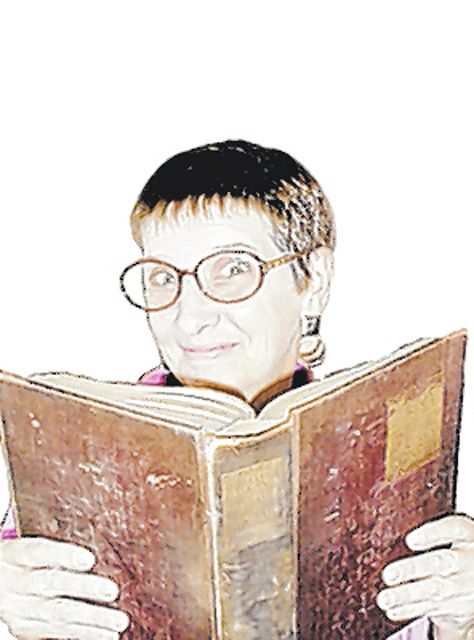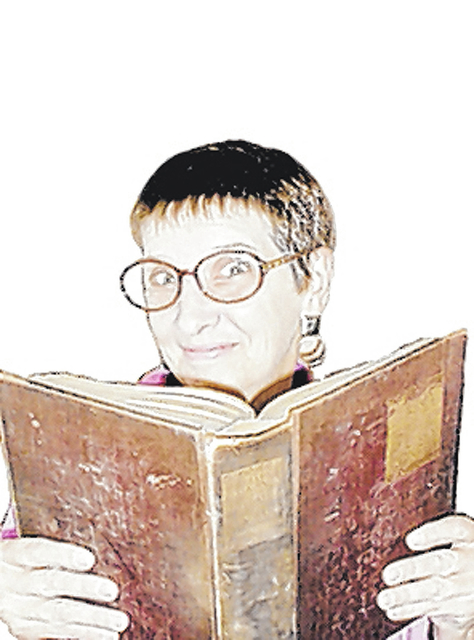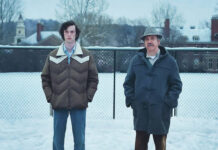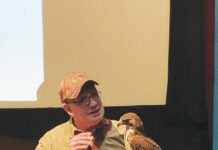If David Mitchell were a fabric artist, one could picture him at his loom, weaving a tapestry in which images appear and disappear, only to show up again in an intricate pattern that does not become clear until the viewer steps back and looks at the whole. But Mitchell is a writer, so in “The Bone Clocks,” he craftily shuttles the weft — a cast of recurring characters — in and out of the warp of multiple settings and plot lines in a six-part story that spans 59 years, from 1984 to 2043.
All but two of the sections have different narrators, but they each connect to Holly Sykes, who narrates the first and final parts. We first meet Holly at age 15, deep in the throes of her first love affair. After a nasty spat with her mother, Holly runs away, slamming behind her the door of The Captain Marvel, the pub where she lives with her parents and younger siblings in Gravesend, England. That door slam, like Nora’s in the final act of “A Doll’s House,” changes Holly’s life forever. She plans to move in with her boyfriend, but when she discovers him in bed with her best friend, she has nowhere to turn.
Angry and betrayed, Holly decides to take to the road for a few days, just to make her mother worry. Along the way, she meets an odd old woman, Esther Little, who will show up repeatedly, and a school chum, Ed Brubeck, who helps her find shelter and a job. But her sojourn is cut short when Ed reappears with terrible news: Jacko, the little brother she adores, has disappeared. This tragedy will haunt her and her family for the rest of their lives.
Holly appears to be a normal teenager, and the author gets her voice just right. But all is not as it seems. Holly tells us that as a little kid, she heard voices she called “The Radio People” because at first she thought the voices were coming from a radio in another room. But the truth is, she has precognition, a form of extrasensory perception, and the people whose voices she hears mean to suck the life out of her. Fortunately, Dr. Marinus, a psychiatrist, has helped Holly get rid of the voices and the “daymares” she experiences – at least temporarily.
Only much later do we discover that Marinus is a member of the Horologists, a strange group of people who extend their lives by taking over the bodies of people who are dying. The Horologists are the good guys, battling another group, the Anchorites, who have similar life-extending powers, but get them by killing children who, like Holly, have the power of precognition, and decanting their blood. Fortunately, this eerie aspect of the novel, with one lamentable exception, comes and goes. Mostly, we are treated to a series of very real people, each with a fascinating story to tell.
The book jumps ahead to 1991 in part two, where Hugo Lamb, an odious student in his final year at Cambridge, cheats and lies his way to wealth, triggering the suicide of one friend and ruining the romance of another.
Fast forward to 2004, and we’re back in England at the wedding of Holly’s sister, Sharon. By now, Holly has had a daughter, Aiofe, with her partner, good old Ed Brubeck, and he narrates this chapter. Ed is a war correspondent and is torn between his love of Holly and their daughter and the irresistible call of the danger and excitement of his work.
One of the most interesting sections comes next. The narrator, Crispin Hershey, is a successful novelist whose reputation takes a downhill slide because of a scathing revue of his most recent book by critic Richard Cheeseman. The funny and vitriolic Crispin retaliates by framing his nemesis, and as a result, the critic spends four years in the hell hole of a jail in Cartagena. Crispin, to his credit, deeply regrets his actions, and works diligently to free Cheeseman.
The fifth part of “The Bone Clocks,” unfortunately, almost lost me. Narrated by none other than Dr. Marinus (now cozily ensconced in a new body), this section abandons reality to bring us the epic battle between the Horologists and the Anchorites, along with a long flashback that gives the history of the soul-feeding bad guys. This departure from the rest of the book’s reality feels both unnecessary and cheesy. It’s as if the author can’t resist putting all of his bells and whistles on display.
Fortunately, the final section, narrated by Holly, who is now in her 70s, is brilliant, suspenseful, and deeply touching. It’s the year 2043, and environmental catastrophes, plagues, nuclear melt-downs, and a crashed internet have reduced life on earth to a nearly pre-industrial level. Holly lives in a tiny seaside cottage in Ireland, where, despite shortages of electricity, food and fuel, she manages to raise two orphans: her 15-year-old granddaughter and a little boy rescued from a refugee ship. She likens herself to the grandmother in “Little Red Riding Hood,” trying to eke out a living in “…a world of too many wolves and not enough woodcutters.”
If there is one theme that ties all of the disparate strands of “The Bone Clocks” together, it is the ferocious power of love, and Holly Sykes is its embodiment, especially when she fights and sacrifices to save the children who are so dear to her. One could argue that “The Bone Clocks” is too ambitious for its own good. However, its wonderful “aha moments,” where we recognize a character from an earlier part of the story or make connections that explain the book’s many mysteries, engage the reader and are enormously satisfying.




